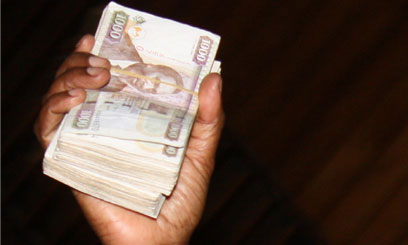NAIROBI, Kenya, Mar 13 – Standard Charted bank has reported a seven percent increase in after tax profit to Sh5.83 billion for the year ended 31st December 2011 up from Sh5.37 billion in 2010.
Total revenue grew to Sh16.2 billion compared to Sh14.15 billion in 2010, driven mainly by interest income on loans while advances increased by 59 percent to Sh9.5 billion on the back of strong asset growth and re-pricing of facilities due to higher interest rates.
Total income was up 15 percent to Sh16.2 billion compared to Sh14.2 billion in 2010.
In a statement to newsrooms, the bank said that non interest income increased by six percent to Sh6.1 billion due to good growth in revenue from foreign exchange, fees and commissions.
Non- performing loans and advances came down from Sh791.6 million (in 2010) to Sh676.7 million last year.
The board recommended a final dividend payment of Sh11 for each ordinary share, following an interim Sh5 dividend payout mid last year. The final Sh6 will be paid by the end of May.
Loans and advances increased by 59 percent to Sh96.1 billion (2010; Sh60.3 billion) while customer deposits increased by 22 percent to Sh122.3 billion (2010: Sh100.5 billion).
Investment in government securities fell by 55 percent from Sh54.5 billion to Sh24.6 billion, as the balance sheet was repositioned away from government securities and into customer assets.
Investment in government securities now constitutes 15 percent of total assets compared to 38 percent in 2010.
Fees and commissions increased by 29 percent from Sh2.6 billion to Sh3.4 billion and were mainly driven by significant growth in loans and advances, trade finance and improved revenues from their custodial services business.
Income from foreign exchange trading increased to Sh2.6 billion, resulting from the volatility of the shilling and on account of increased volumes traded by importers in the manufacturing, agriculture, oil and telecommunications industries.
Growth in foreign exchange income was also driven by the combination of regular economic expansion coupled with an aggressive growth strategy. It included retaining and enhancing relationships with old clients, exploiting new opportunities (e.g. new custody business) and taking advantage of overall economic growth.


































